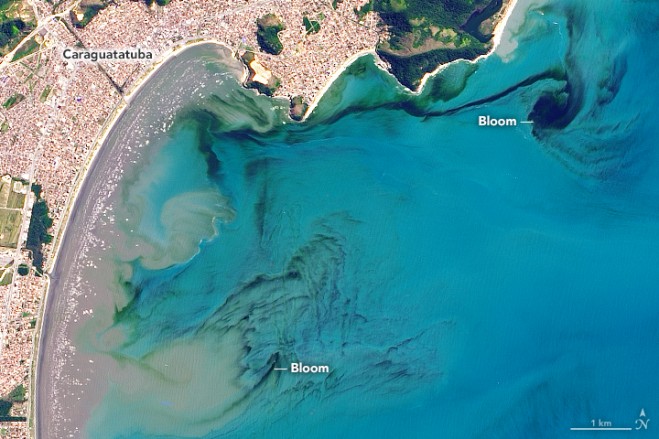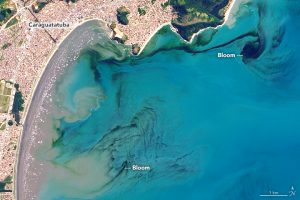

The Operational Land Imager (OLI) on the Landsat 8 satellite captured this image on Sept. 5, 2017, of the bloom near Caraguatatuba. (Credit: NASA Earth Observatory images by Joshua Stevens, using Landsat data from the U.S. Geological Survey.)
In early September 2017, ocean scientists noticed something swirling in the waters off the coast of the Brazilian state of São Paulo. The sinuous threads of darkness amid the blue Atlantic Ocean were not caused by oil; they were the result of a phytoplankton bloom.
The dark colors are probably high concentrations of dinoflagellates, according to researchers at the University of São Paulo. Analyzing water samples collected from Caraguatatuba Bay and from the channel between the Ilhabela archipelago and the mainland, they identified the species as likely to be Gymnodinium aureolum.
“But this is a complicated species to identify,” said Aurea Maria Ciotti, a scientist at the university’s Center for Marine Biology. She and others are awaiting the results of additional tests to confirm the identification. “Blooms here are very uncommon—this is the first time for this species as far as we know.“